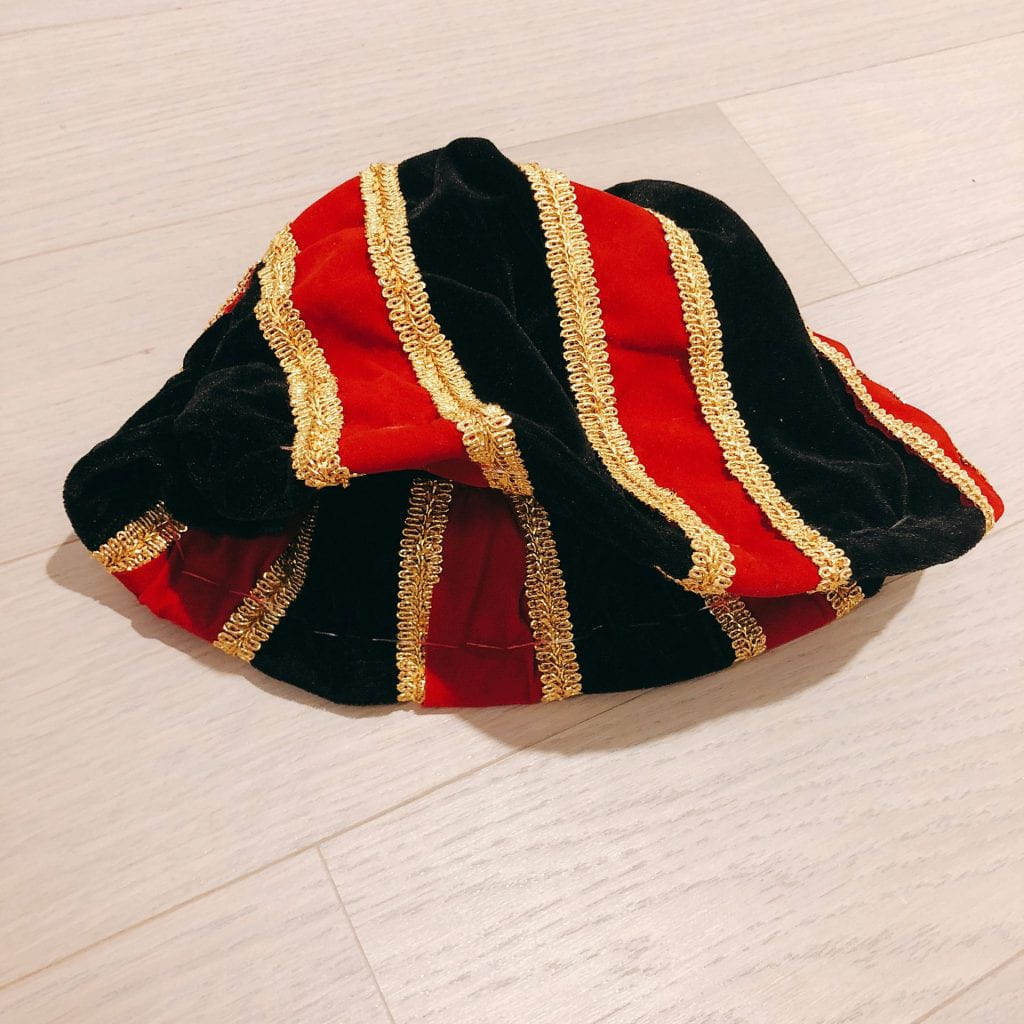For my final project, I make a woman’s hat (for winter) using the sleeves of a Halloween costume I found.
The brim of the hat can stand up and block the sunlight.
The final product is consist of three parts:
- BRAIDS
- Synthetic fabric
- Cotton Thread
Life cycle of each material:
- BRAIDS
- Raw material:
- Polypropylene (PP)-Propylene gas
- Dye/catalyst/electricity/water
- Processing:
- Polypropylene is made from the polymerization of propylene gas in the presence of a catalyst system, usually Ziegler-Natta or Metallocene catalyst.
- Polypropylene is a thermoplastic polymer. It is melted, then extruded to form fibres.
- Polypropylene yarn cannot easily be dyed once it is formed. Instead, the finished color is determined by a blend of ingredients.
- Highly concentrated pigments are measured, heated and blended.
- The polypropylene is melted—> form the yarn—>bind into fabric
- Distribution: There’re a list of plastic suppliers in U.S. The polypropylene fabrics are delivered to clothes manufacturers; all the parts are put together in the manufacturers, and then delivered to the local shops. During the distribution, tons of cardboards (box), plastic packagings, plastic tapes are used and wasted. Besides, the trucks produce carbon dioxide.
- Use: the consumers wash and dry the clothes again and again, which use lots of water and energy
- Recycle and disposal
-
Disposal
- Because of the short lifespan of PP, the majority of these thermoplastics end up in landfills as waste.
- The burning of thermoplastics like PP can discharge dioxins and vinyl chloride.
Recycle:
- Recycling Polypropylene is the best available option to handle this situation in an eco-friendly and cost-effective way.
- The recycling process involves five steps namely collection, sorting, cleaning, reprocessing by melting and producing new products from recycled PP.
- Thread
- Raw material: Cotton, water, electricity
- Processing:
- Cotton grown in Texas, California, Arizona
- Cotton is picked from cotton plants in the field and compressed into large bales.
- The bales often contain dirt, broken pieces of cotton boll, seeds, and other impurities, so cleaning is a first step at the mill.
- The bale is broken, the fibers are opened by a comb-like device, mixed together, and cleaned.
- The cleaned cotton fibers are termed laps. The laps are fed into a carding machine that separates the fibers. Further cleaning, combing, and sorting readies the fibers for processing into thread.
- Water intense- cleaning/growing
- Distribution: The farms that grow cotton is mostly located in Texas, California, Arizona. The cotton are delivered to manufacturers to produce thread; all the parts are delivered and put together in the clothes manufacturers and local shops. During the distribution, tons of cardboards (box), plastic packagings, plastic tapes are used and wasted. Besides, the trucks produce carbon dioxide.
- Use: the consumers wash and dry the clothes again and again, which use lots of water and energy
- Disposal
- It is a natural fiber and is biodegradable, so any cotton fibers that cannot be recycled or used further can be composted and will not take up space in landfills.
- However, the thread is mostly attached to the clothes, few people take the thread off to recycle.
- Recycle:
- Cotton recycling prevents unneeded wastage and can be a more sustainable alternative to disposal. Recycledcotton can come from secondhand clothing or from textile waste or leftovers which are then spun into new yarns and fabrics.
- Synthetic plush
- Raw Materials: Polyester, disperse dye
- Processing:
- Synthetic polyester is made using a chemical reaction involving coal(West Virginia, Kentucky, Illinois, and Pennsylvania ), petroleum(Gulf Coast of Texas), air and water.
- The fibers are then hot stretched until they are about five times their original length in order to decrease their width. The fiber is then wound onto cones as filaments or is crimped and then is cut into staple lengths.
- Dyed with disperse dyes which contain heavy metals and lubricants.
- Toxic gases are released into the air and water during the production
- Energy intensive process — electricity
- Distribution: There’s a list of plastic suppliers in the U.S. The polypropylene fabrics are delivered to clothes manufacturers; all the parts are put together in the manufacturers, and then delivered to the local shops. During the distribution, tons of cardboards (box), plastic packagings, plastic tapes are used and wasted. Besides, the trucks produce carbon dioxide.
- Use: the consumers wash and dry the clothes again and again, which use lots of water and energy
Disposal
- Polyester is non-biodegradable/ hard to recycle’
- Go directly into landfill
Recycle:
- Melting down existing plastic and re-spinning it into new polyester fiber.
- Bibliography
- https://www.sustainabilityconsortium.org/wp-content/themes/enfold-child/assets/pdf/insights/toys-plush-toys-insights.pdf
- https://www.merriam-webster.com/dictionary/plush
- https://goodonyou.eco/material-guide-polyester-2/
- http://www.designlife-cycle.com/polyester
- http://www.tzlifute.com/cnplybelt.htm
- http://www.essentialchemicalindustry.org/chemicals/propene.html
- http://www.madehow.com/Volume-5/Thread.html#ixzz5lyryxfRa
- https://oecotextiles.wordpress.com/2011/01/12/recycled-polyester-to-recycle-or-not-to-recycle/






